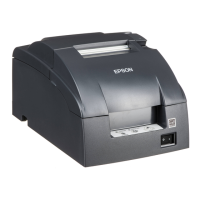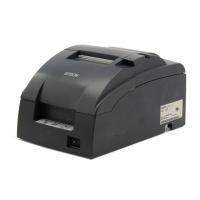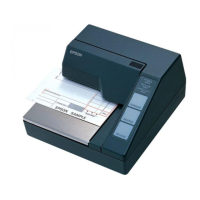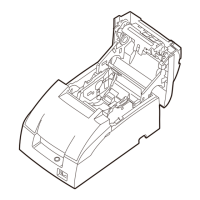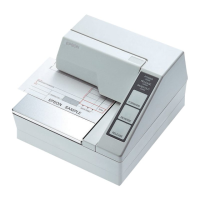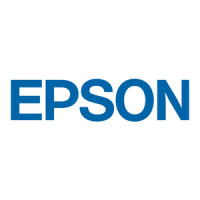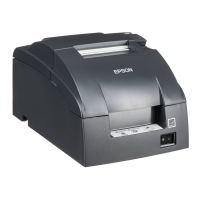2-16 Mechanism Configuration and Operating Principles Rev. A
MICR Reader Assembly (for printers with a MICR reader) (not available for the
TM-U950P)
The main components of this assembly include those shown in the slip assembly section of this
chapter, namely the MICR head assembly, carriage motor assembly, head carriage assembly,
frame carriage assembly, MICR head holder change lever, MICR head holder frame, MICR head
holder lever, MICR head holder roller, MICR transmission pulley, and MICR transmission belt.
This assembly is installed at the factory, as an option, in the paper path of the slip assembly
shown later in this chapter.
MICR reading and reverse-side printing operations
Check paper is inserted in the same way as slip paper, with the check paper following along
below the right end of the slip paper guide and being inserted from the direction. After
reaching the form stopper, the check paper is positioned for printing (see Figure 2-26).
At this point, the slip entrance detector detects the presence of the check paper. Next, the top of
the check paper is positioned by the slip assembly, as described in the Slip Paper Assembly
section of this chapter, so that the check paper is ready for feeding (see Figure 2-26).
Next, the journal motor rotates in the same way as with slip feeding, at the MICR reading speed,
and begins to carry the leading edge of the check paper the specified number of steps from the
form stopper to the MICR head assembly.
At this point, the head carriage assembly is moved by the carriage motor assembly the specified
number of steps, then waits (see Figure 2-27).
In response to this movement of the head carriage assembly, the MICR head holder change lever
moves in the direction, and the MICR head holder roller is pressed against the MICR
head assembly, in the direction, so that the check paper is caught between the roller and
the assembly.
Because the MICR head holder roller comes between the MICR transmission belt and the MICR
transmission pulley and is normally synchronized to the rotation of the slip holder roller
assembly, the movement of the head carriage assembly causes the shifted MICR head holder
roller, with the check paper caught in it, to transport the check paper from the point where it is
pressed against the MICR head assembly at the MICR reading speed to be read by the MICR.
Next, the check paper moves to a position conforming to the reverse-side printing format, and
the check paper is confirmed to be effective.
At this point, if the MICR characters could not be discerned easily, the reading operation is
repeated. (If problems occur with the second reading, or if the MICR character waveform cannot
by detected, the check paper is ejected without being printed.)
When the check paper has been confirmed to be effective, printing is carried out on the reverse
side by the head carriage assembly, in the specified format, and the paper is ejected, thus
concluding the printing operation.
a
a
CONFIDENTIAL

